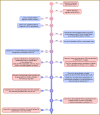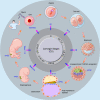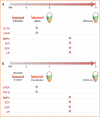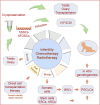Germline stem cells in human
- PMID: 36184610
- PMCID: PMC9527259
- DOI: 10.1038/s41392-022-01197-3
Germline stem cells in human
Erratum in
-
Correction To: Germline stem cells in human.Signal Transduct Target Ther. 2022 Dec 3;7(1):385. doi: 10.1038/s41392-022-01258-7. Signal Transduct Target Ther. 2022. PMID: 36460639 Free PMC article. No abstract available.
Abstract
The germline cells are essential for the propagation of human beings, thus essential for the survival of mankind. The germline stem cells, as a unique cell type, generate various states of germ stem cells and then differentiate into specialized cells, spermatozoa and ova, for producing offspring, while self-renew to generate more stem cells. Abnormal development of germline stem cells often causes severe diseases in humans, including infertility and cancer. Primordial germ cells (PGCs) first emerge during early embryonic development, migrate into the gentile ridge, and then join in the formation of gonads. In males, they differentiate into spermatogonial stem cells, which give rise to spermatozoa via meiosis from the onset of puberty, while in females, the female germline stem cells (FGSCs) retain stemness in the ovary and initiate meiosis to generate oocytes. Primordial germ cell-like cells (PGCLCs) can be induced in vitro from embryonic stem cells or induced pluripotent stem cells. In this review, we focus on current advances in these embryonic and adult germline stem cells, and the induced PGCLCs in humans, provide an overview of molecular mechanisms underlying the development and differentiation of the germline stem cells and outline their physiological functions, pathological implications, and clinical applications.
© 2022. The Author(s).
Conflict of interest statement
The authors declare no competing interests.
Figures






References
-
- Weismann, A. The Germ-plasma: Theory of Heredity. (Scribner’s Sons, 1893).
Publication types
MeSH terms
LinkOut - more resources
Full Text Sources

